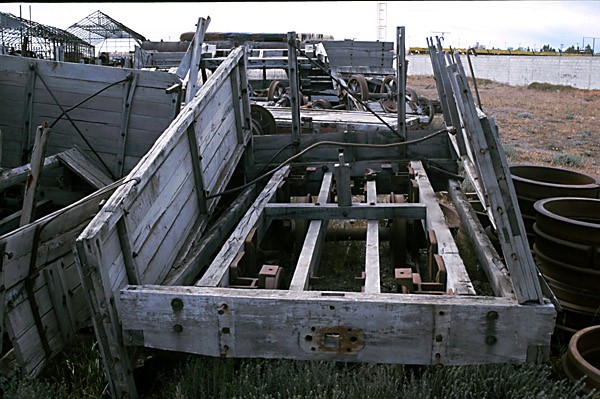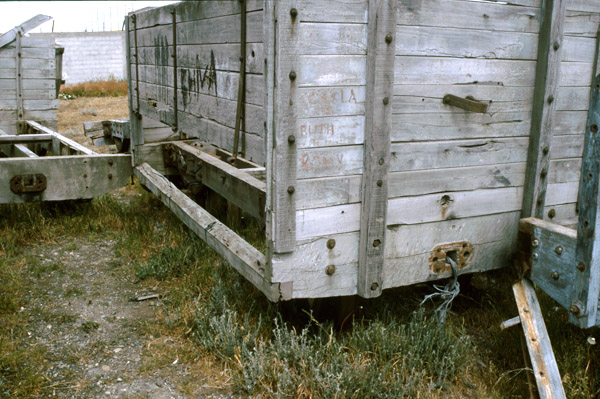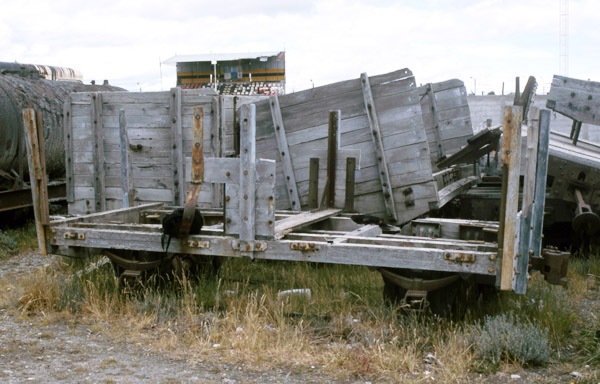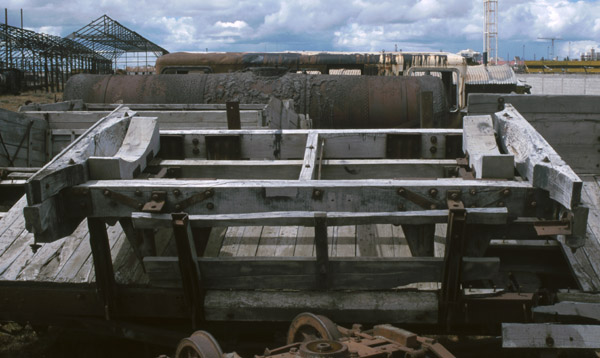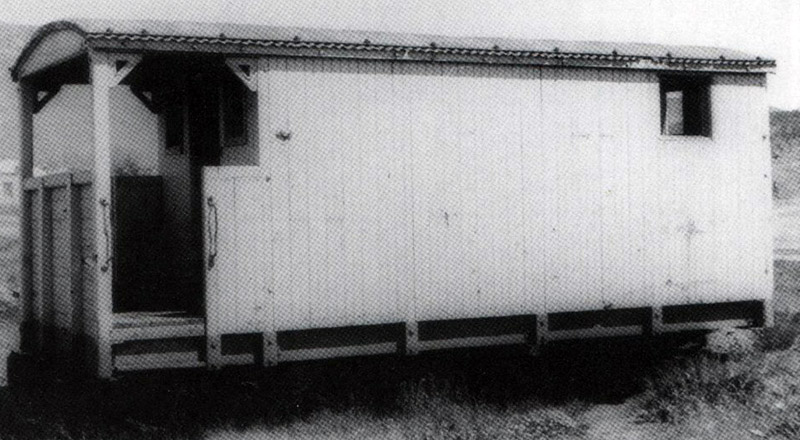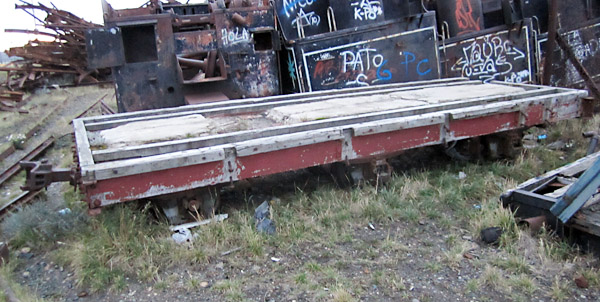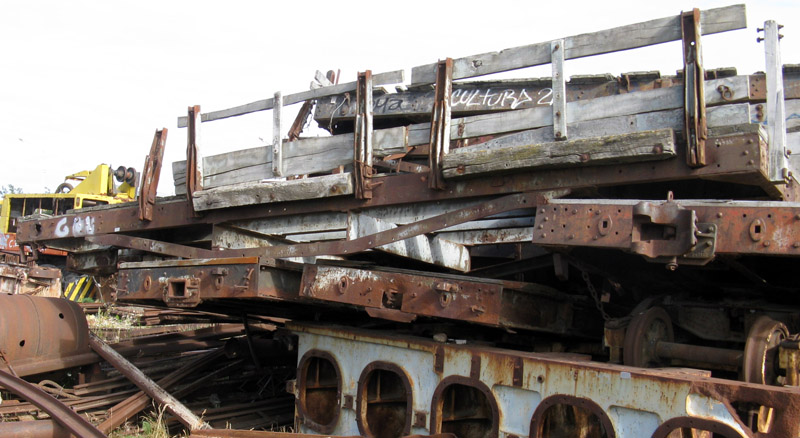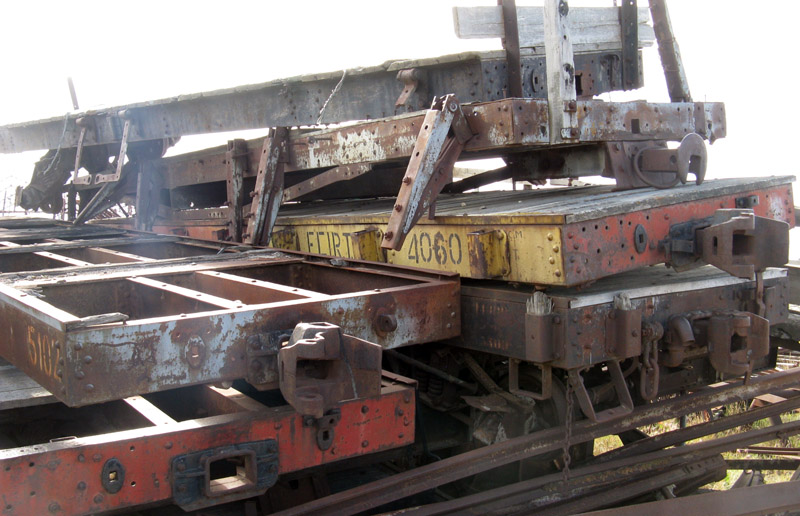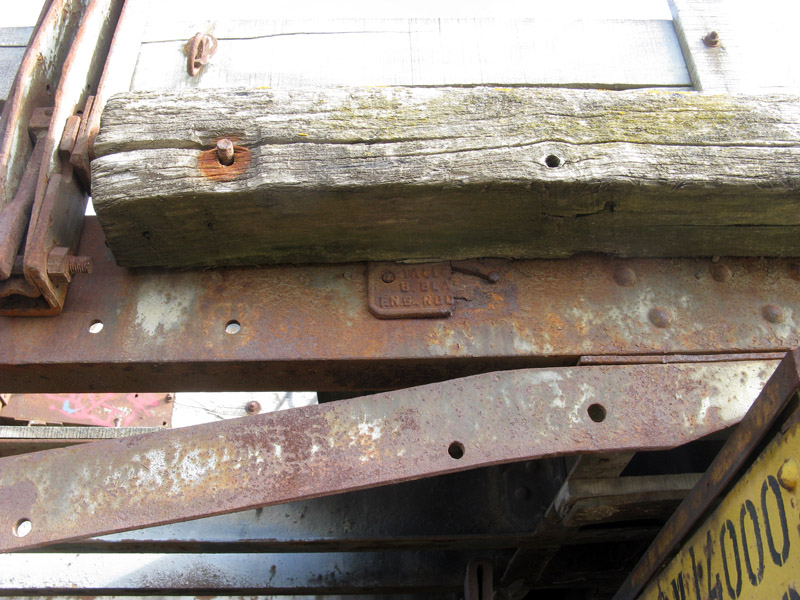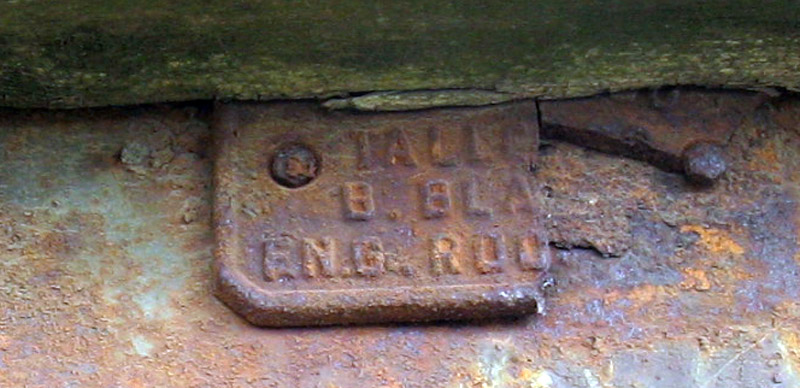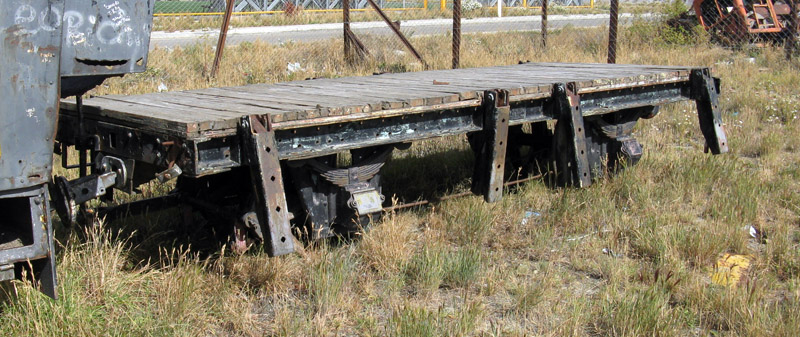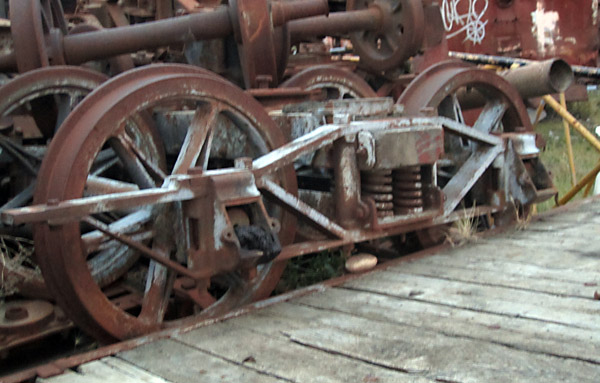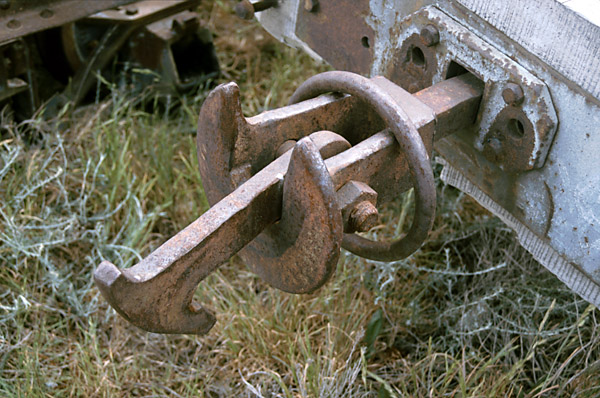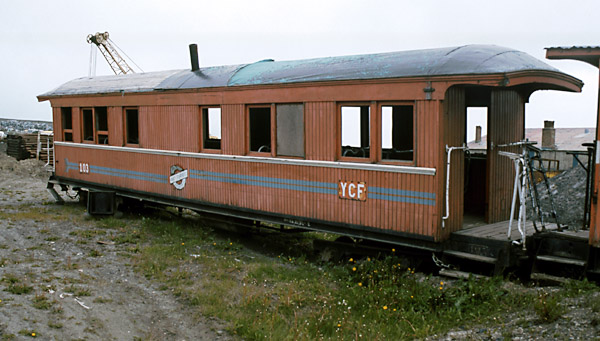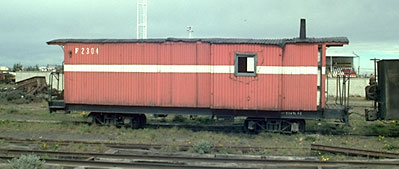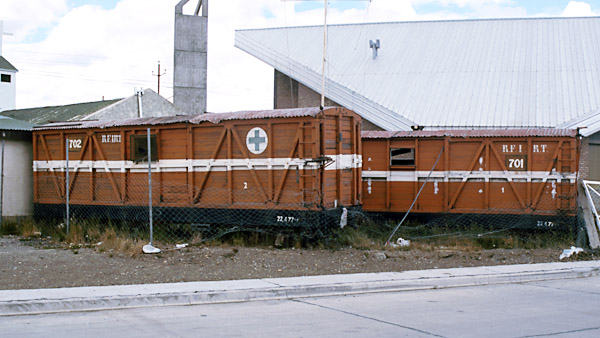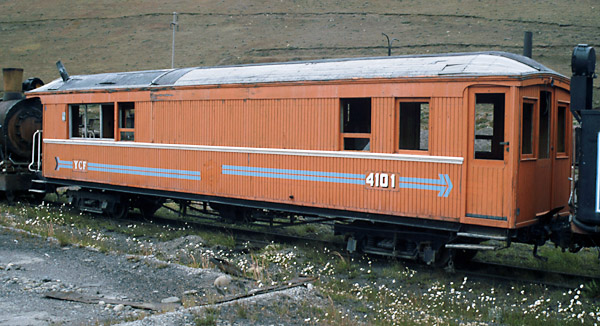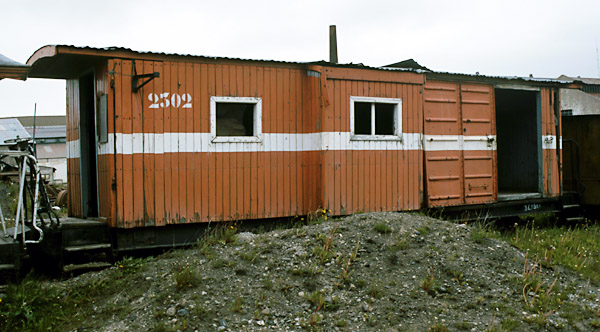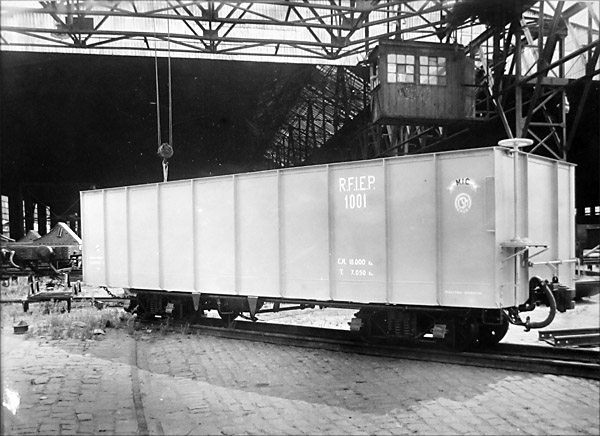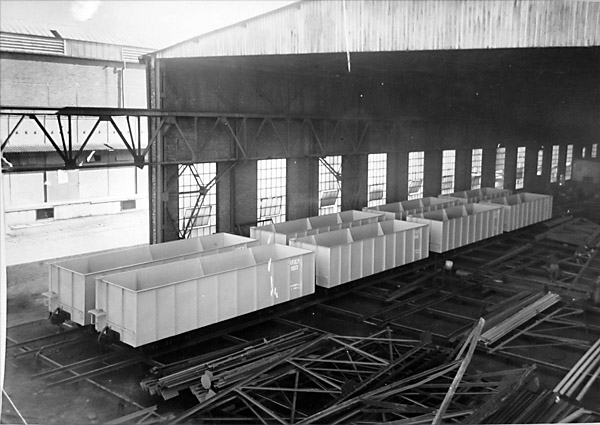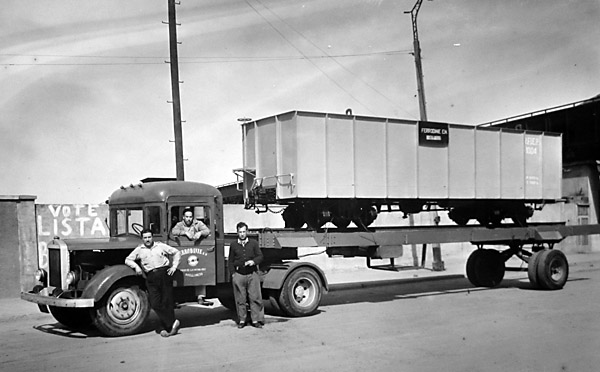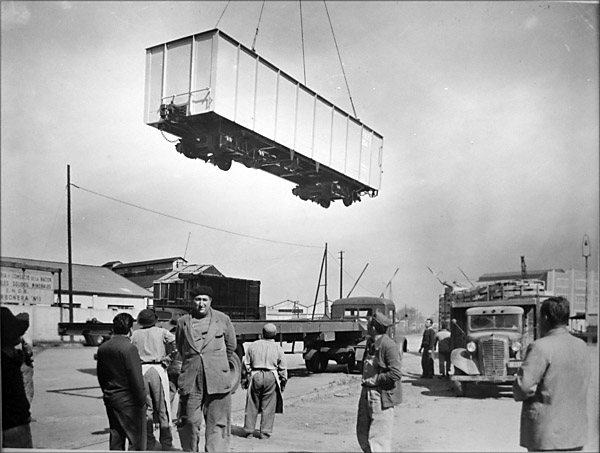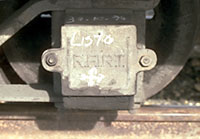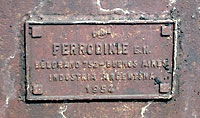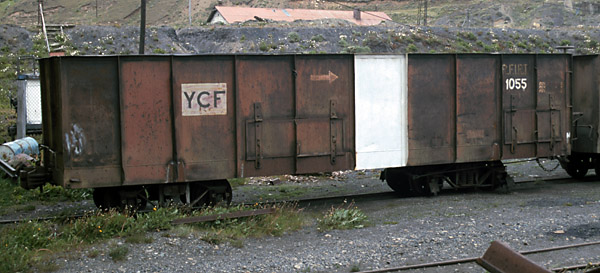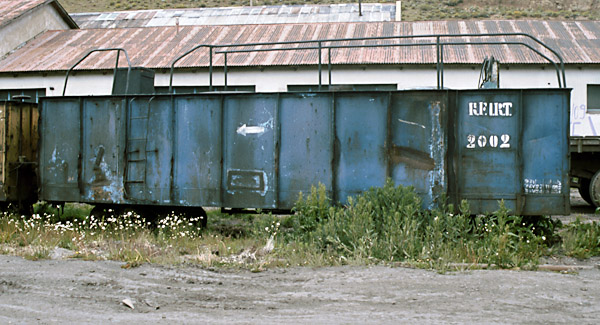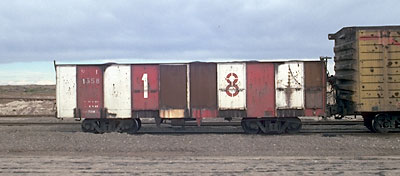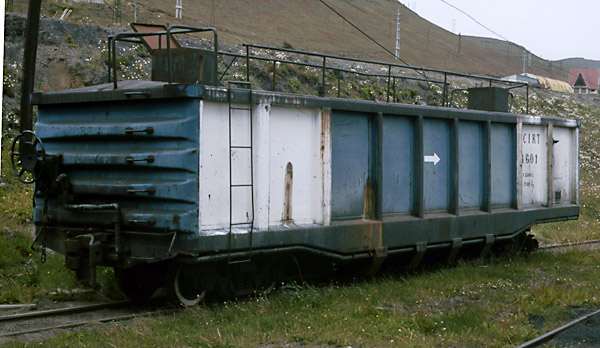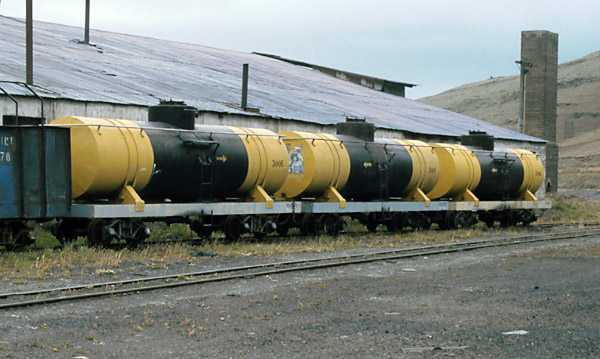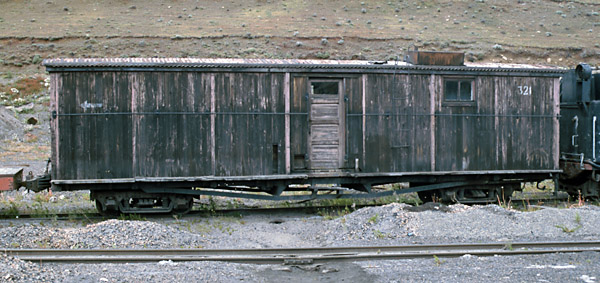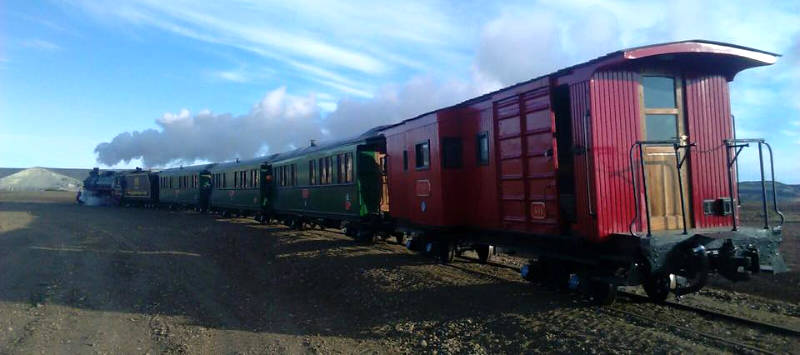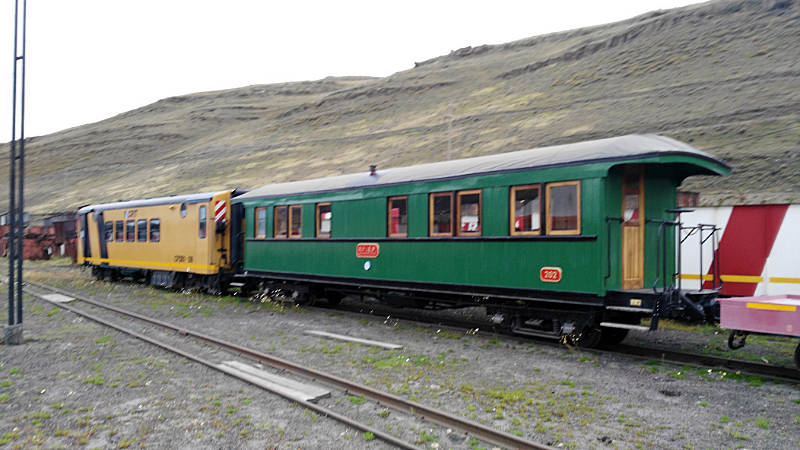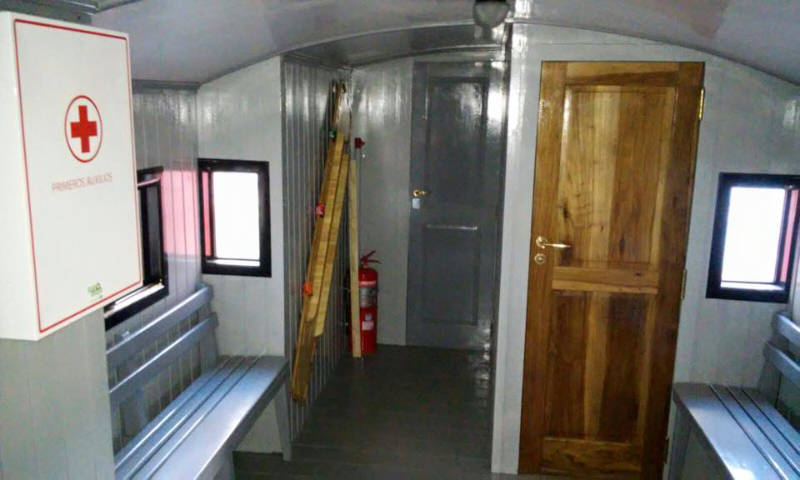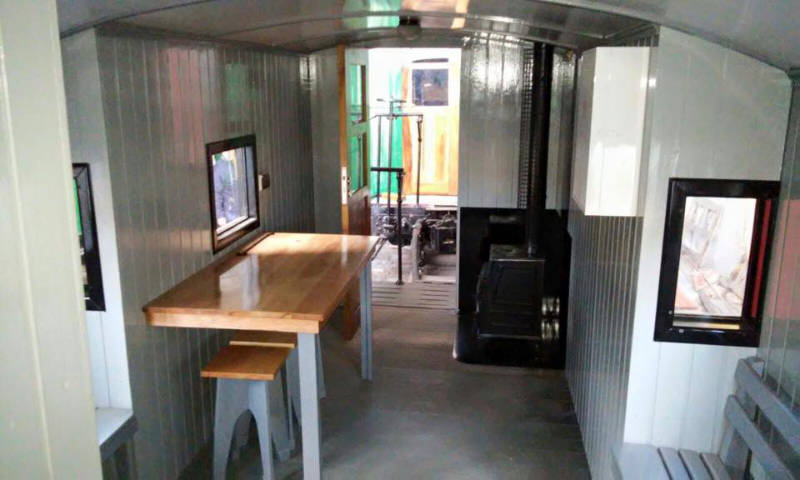 |
|||||||||||||||||
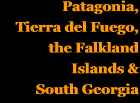 |
|||||||||||||||||
 |
|||||||||||||||||
 |
|||||||||||||||||
Wagons ancient and modern The first rolling stock There were apparently 190 of these wagons brought south, built around 1910 and overhauled at the former BBNO workshops in Bahía Blanca before shipment to Río Gallegos (8). Some were side opening hoppers, others conventional 'bordes altos', and a few were tankers. Their capacity was about 6 tonnes. There is still some confusion about where exactly they had worked in their earlier life, for whilst they are supposed to have carried bunker coal to the stockpiles and back to the warships at Puerto Belgrano, aka Puerto Militar, south-east of Bahía Blanca, the only 75cm gauge locos supplied to that area were a batch of Maffei 0-4-0Ts built in 1911 for use at Bahía Blanca port (Ingeniero White). Perhaps there has been some confusion between these two very close locations. The battered remains of the ex Ministry of Marine wooden wagons at Río Gallegos. This one had been a hopper with low-level side doors and a ridged floor, but there were other high-sided ones and even one or two small tankers.
A rather more complete hopper wagon, showing the bevelled lower member which would have supported the edge of the sloping floor, and the remains of hinges for the top hung low level doors.
The remains of what had originally been a high side wagon with a flat floor and stanchions mid-way along each side. This one has top hung low level doors like the hopper above. This may have been a modification to suit the vehicle for ballast train use on the construction of the Río Turbio line.
The chassis of a small tank wagon, showing the steel horn guides bolted onto the wooden longitudinal members.
See also a view of a chassis found near Río Turbio in Appendix 6.
There was also a six-wheeled brake van that arrived from the same source - a most unusual wheel arrangement in the Argentine. Whilst its main frames are of steel the running gear is identical to that of the four-wheeled wagons. Richard Campbell caught it there in the 1970s.
The underframe and running gear of the brakevan still survive in the dump at Río Gallegos in May 2011, but the bodywork has long gone. The grey lumps in the centre section of the chassis are concrete blocks, added to increase the braking power on unfitted trains. It can also be seen that this vehicle carries an autumatic coupler on at least one end.
Exploration of the remains within the museum yard at Río Gallegos revealed the remains of one or two bogie wagon which were clearly not of Familleureux origin. They had been adapted from something else, with the central coupling reset at exactly six inches lower than the original. The folding ironwork supporting the sides was decidedly similar to that on the four wheel wagon noted in Chapter 8f as having its origins on the metre gauge.
A view of a second one, shows clearly the lowered coupling, still sporting the body (upside down) of its Norwegian coupling.
On the sole bar of the upper wagon is the remains of a works plate.
On the sole bar of the upper wagon is the remains of a works plate.
TALLE (R) B. BLA (NCA) F.N.G. ROC (A)
This view of the wagon shown in Chapter 8f was taken in the museum yard in 2011, and it can be seen that on it too, the coupling height has been lowered.
This view of the wagon shown in Chapter 8f was taken in the museum yard in 2011, and it can be seen that on it too, the coupling height has been lowered.
It is difficult to think of a source of 75cm gauge bogies in Argentina from that era. However, it was clear that the bogie frames could have been rebuilt to suit a narrower gauge as they had a major timber component which could easily be shortened or replaced. This coupled with the other aspects noted about lead to the suspicion that they, too, might have originated on the FCCC.
This form of bogie was present on a picture of one of the FCCC wagons in its original condition in the early years of the FCCC, where the unusual form of end extension can be seen. The conclusion may thus be drawn that at least two of these wagons survived the end of the use of metre gauge in the early 1930s and were in sufficiently good condition in the late 1940s to be worth converting to 75 cm gauge for further use on the RFIRT.
Also in the dump in 2011 was this bogie/truck with very old style wheelsets with a large diameter. There is also a cantilevered bracket at this end of the bogie frame, presumably for brake gear. Wheels of this style with split spokes usually date from the nineteenth century, ie. at least fifty years before the RFIRT was built. It is difficult to think of a source of 75cm gauge bogies in Argentina from that era. Any thoughts would be very welcome.
A coupling on one of the Puerto Belgrano wagons. One or two of the surviving wrecks carry automatic couplers, suggesting that the changeover took place before these wooden wagons went completely out of service.
Surplus stock from the 1922 order The passenger coaches were used for a variety of purposes: by staff, as staff living accommodation, for the miners' passenger timetable between 28 de Noviembre and Río Turbio, for passenger service during snow storms when roads were blocked, and occasionally for special charters by rail enthusiast groups or the like The inventory at the time of privatization in 1994 listed ten very old passenger coaches, presumably all from the 1922 order. Their original FCE running numbers are unknown, though RFIRT running numbers of 103, and 4101 can seen be in photos below and a 1st class coach numbered 501 was supposedly named 'Kufun Leufú'.
The vehicle above is a 1922 Famillereux first class coach, whilst the van below is a 1922 'furgón carga' though reclad on the outside with corrugated iron and relegated to ordinary diamond/archbar bogies.
With the general clear out of old equipment at Río Gallegos in 2000, the ambulance vans were moved to a hospital on the east side of town. However, by 2011 they had ended up back near the old loco shed, at the Ferro-aficionados compound.
As happened on other lines using the 1922 equipment, all sorts of modifications were made over the years. Here are one or two examples:
Bigger wagons The contract was won by Ferrodinie (Avellaneda, just south of Buenos Aires), and photos below show the coal tippler wagons under construction and during delivery. These are 7.8m. long, and have a loaded weight of 23 tonnes. The following four pictures were taken at the Ferrodinie workshops and during the transfer by road and then sea to Rio Gallegos. Here is what is presumably the first wagon of the series, numbered 1001, after completion (3).
A batch of the new wagons await delivery.
A wagon being delivered to the dock.
Off the lorry and onto the ship.
These wagons run on a variety of bogies (trucks), latterly largely with roller bearings, and are of two main varieties, unloading by side doors or by tippler. A proportion were vacuum brake fitted so that the leading fifteen in each train could form a 'fitted head' for braking purposes. To enable easy checking that trains are complete as they pass, the last wagon of each train is a 'colero' with coloured stripes painted on the sides and ends. This system enabled the railway to do without manned brake vans, instead expecting station staff or the crews of opposing trains to check that a consist was complete.
The wagon below is a typical 23 tonne tippler from Ferrodinie, a worksplate and RFIRT axlebox cover are shown above. This particular vehicle has been relegated to departmental work and has gained a couple of crudely-cut side doors.
These wagons appear in a variety of guises. The next one has been turned into a locomotive water tender by making it water-tight and adding a top with fillers and a handrail. The purpose of the arrow is uncertain.
This next wagon is a 'colero', painted with red and white stripes to denote the end of the train. In this case the usual four figure wagon number is incomplete owing to the replacement of a couple of steel panels.
Below are a variety of wagon bogies - from left an old-fashioned diamond bogie (an archbar truck to Americans), then a more recent but still conventional cast steel bogie with roller bearings, and finally a rather unusual design also using rollers.
Eventually the railway found it easier to purchase old metre gauge wagons from the FC General Belgrano when it needed special-purpose vehicles. These could be easily regauged, and were usually well within the the RFIRT's generous loading gauge. A very large steel wagon converted into a water tanker. This vehicle was apparently built at the San Antonio Oeste workshops in 1986 as a prototype for a fleet of 32 tonne high capacity wagons, but the design was not proceeded with and this one became a water tanker (4).
A set of tank wagons also possibly from Ferrodinie in the 1950s, or purchased later from the Belgrano.
A staff riding/living van, of unknown origin. It doesn't look like a 1922 chassis though the bogies appear to be from 1922 passenger stock, probably fitted to improve the comfort.
The new tourist train Here it is headed by the rebuilt Mitsubishi loco № 119 and comprises three totally reconstructed Familleureux coaches, renumbered 201-203, and one of the goods brake vans rebuilt to its new role. We think the view was taken at the turning loop at Punta Loyola. (5) [1577]
Here one of the refurbished Familleureux coaches, № 202, stands coupled to one of the two new coaches in the yard at Río Turbio some time later. (6) [2411]
One of the goods brake vans was remodelled to accompany the tourist coaches, a numbers of views of its interior were published. (5) This view shows the seating in the two very wide duckets, first aid cabinet and traditional canvas stretcher on the wall; the grey door in the background gives access to a small workshop, leading to an end balcony and the varnished door leads to the toilet facilities.
Looking in the other direction to the above showing the heating arrangements, a solid fuel stove, also useful for boiling the water for the maté. The table under the window serves the dual purpose of messing and as a desk for the logbook. [1572]
An external view of the van while it was still under refurbishment in Trevelin showing the elaborate brass ownership plate and the sliding opening window on the side of the guard’s ducket. It should be noted that the original name of the line has been used; with the ousting of President Perón it had been quickly changed. [1572] References: 18-3-2021 |
|||||||||||||||||
Main pages
Appendices
Chapter 9
Coal railways including the RFIRT


